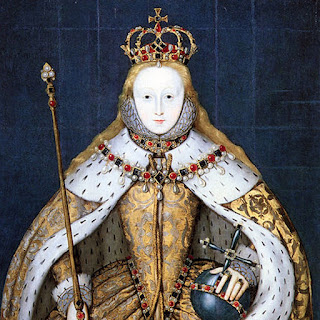The advantages of Cranmerian minimalism in commemoration of saints
DuBose offered unapologetic defenses of that system of racial oppression while espousing white supremacy in some of his writings, even praising the early Ku Klux Klan.
DuBose reminds us that acceptance of - indeed, defence of - injustices can easily and routinely become part of ecclesial life. Anti-Semitism, misogyny, and racism have all taken root at various times and in various places in the life of the Church. This is one of the reasons, by the way, which might make us think about the usefulness of the classical Prayer Book version of the Nicene Creed omitting 'holy' from its description of the Church.
DuBose is one of more than 150 'lesser feasts' in the TEC calendar. It is inevitably the case with the commemoration of post-New Testament figures that we encounter aspects of the life and witness within the Church that are profoundly problematic. We might think of the anti-Semitism of Chrysostom, Augustine's defence of the use of imperial force against the Donatists, or Bernard's support for the violence of the Crusades. Within the Anglican tradition, there is Cranmer's role in the execution of the Arian George van Parris and Taylor's robust support for penal laws against Roman Catholics, Presbyterians, and Quakers.
It is, of course, the case that the witness and writings of each of these figures has deeply enriched the Church's life. We can articulate a nuanced understanding of our gratitude for their gifts, while also acknowledging how aspects of their witness and teaching fell short of the Kingdom of Christ. This, after all, is a dynamic known to each Christian: we are simultaneously saint and sinner. Liturgical commemorations, however, have a tendency to obscure this, providing - understandably - a sole focus on what was good and true in such lives, and not acknowledging the sins and failures of those being commemorated.
What is more, in the post-9/11 context in which religion is routinely portrayed as divisive and undermining of human dignity, and amidst other cultural concerns regarding race and gender, the churches must surely exercise prudence and caution when proposing particular individuals as exemplars of the Faith.
Related to this is the fact that Anglicanism from the Reformation until the late 20th century did not regard the churches as possessing any authoritative insight into and judgement of the witness and discipleship of individual Christians that would recommend them as exemplars. There is one exception which proves the rule, the 30th January commemoration of the Royal Martyr. This was was understood to be more a 'state service' than the celebration of a saint. 30th January was an exercise in national memory and political theology. The example of Charles gave in his death - forgiving his persecutors - was part of the liturgy, but he was not presented as an exemplar beyond this. In other words, without the trauma of Civil Wars and Protectorate, if Charles had continued to reign, there would have been no liturgical commemoration of him.
With no claim to authoritative insight into and judgement of the witness and discipleship of individual Christians - and, for this and other significant theological reasons, having nothing akin to the Roman process for canonisation - the processes Anglican provinces use to include figures in the liturgical calendars tends to be a 'mess of pottage'. We see this in the rather important theological questions which might be asked of the official TEC statement regarding DeBose. What does the statement mean by "a church-anointed saint"? By "regarded as an Episcopal saint" and "DuBose was granted Episcopal sainthood"?
The advice provided by the 1958 Lambeth Conference on such commemorations was carefully worded to avoided such confused and misleading phraseology:
the following principles should guide the selection of saints and heroes for commemoration:
(a) In the case of scriptural saints, care should be taken to commemorate men or women in terms
which are in strict accord with the facts made known in Holy Scripture.
(b) In the case of other names, the Kalendar should be limited to those whose historical character
and devotion are beyond doubt.
The language of 'saint' is here held alongside, not applied to, "other names", "heroes" (admittedly this is not the most appropriate of terms). In other words, Lambeth 1958 quite deliberately avoided the theological confusions and incoherence involved in extending 'saint' and the associated language to such other commemorations. Of course, a comparison might be made between these 'lesser festivals' and the Black Letter Days which Cranmer included in the 1552 liturgical calendar. Key to this, however, was the absence of any liturgical commemoration. As the bishops in 1661 stated regarding the retention of Black Letter Days:
[they] are left in the Calendar, not that they should be so kept as holy days, but they are useful for the preservation of their memories and for other reasons, as for leases, law days, etc.


Comments
Post a Comment